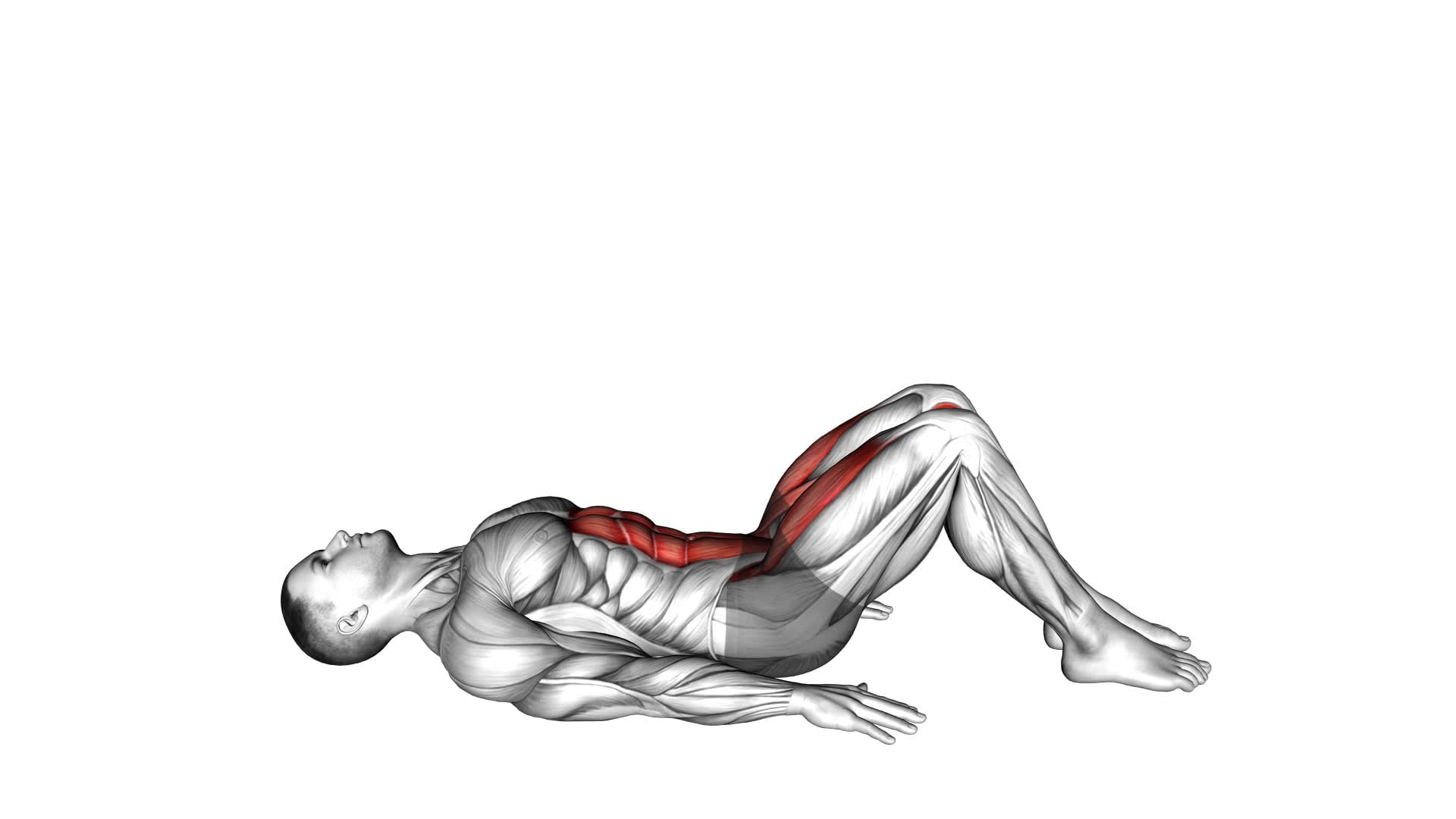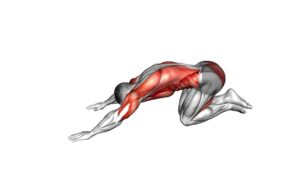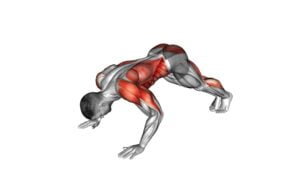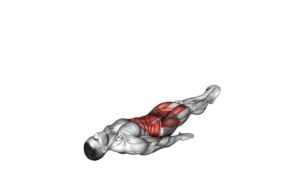Lying Leg Raise (Modified) – Video Exercise Guide & Tips

Are you looking to strengthen your core and improve your lower body strength? Look no further than the modified lying leg raise exercise! In this video exercise guide, we'll show you the proper form and technique for this effective exercise.
Watch This Exercise Video
All you need is a mat and a few minutes of your time. Get ready to feel the burn and achieve better results with these helpful tips.
Let's get started!
Key Takeaways
- Proper form and technique are essential for effective lying leg raises.
- Avoid common mistakes such as using momentum, lifting hips or arching the lower back excessively, and swinging or jerking motions.
- Lying leg raises strengthen core muscles, target hip flexors and quadriceps, improve hip mobility and stability, and build strength in the lower body.
- Variations of the exercise include adding ankle weights, using an incline bench, targeting the lower abs more intensely, and performing the exercise without added resistance.
Proper Form and Technique
To perform the lying leg raise (modified) with proper form and technique, start by lying flat on your back. Place your hands underneath your glutes for support, keeping your palms facing down. Bend your knees slightly and lift your legs off the ground, ensuring that your feet are together and toes are pointed towards the ceiling. This is your starting position.
Now, engage your core muscles by drawing your navel towards your spine. Slowly raise your legs towards the ceiling, making sure to keep them straight and avoiding any swinging or jerking motions. As you lift your legs, exhale and squeeze your abdominal muscles to maintain stability.
Common mistakes to avoid include using momentum to lift your legs, which reduces the effectiveness of the exercise. Additionally, be mindful not to lift your hips or arch your lower back excessively, as this can place strain on your spine.
The benefits of the lying leg raise (modified) include strengthening your core muscles, particularly the lower abdominals, hip flexors, and quadriceps. This exercise also helps improve hip mobility and stability.
Variations of the lying leg raise (modified) include adding ankle weights for increased resistance, or performing the exercise on an incline bench to target the lower abs more intensely.
Remember to always consult with a fitness professional before attempting any new exercise, especially if you have any pre-existing injuries or conditions.
Equipment Needed
You will need some equipment for performing the lying leg raise (modified) exercise. Here's a list of the equipment you'll need:
- Exercise mat: A comfortable and supportive mat will provide cushioning for your back and prevent any discomfort during the exercise.
- Dumbbells or ankle weights: Adding resistance to your leg raises can help increase the intensity of the exercise and target your muscles more effectively. You can use dumbbells or ankle weights to add resistance.
- *Benefits:* Adding resistance to your leg raises helps to build strength and muscle tone in your lower abdominal muscles, hip flexors, and thighs. It also increases the challenge of the exercise, making it more effective for muscle development.
- *Variations:* If you don't have dumbbells or ankle weights, you can use household items such as water bottles or cans as makeshift weights. Alternatively, you can perform the exercise without any added resistance and still reap the benefits of the exercise.
Step-by-Step Execution
To begin executing the lying leg raise (modified) exercise, position yourself on an exercise mat with your back flat against the floor. Keep your legs straight and extend them fully. Place your hands underneath your glutes for support. This is your starting position.
Now, slowly lift your legs off the ground, keeping them straight and together. As you lift, engage your core muscles and breathe out. Continue raising your legs until they're perpendicular to the floor or until you feel a stretch in your lower abs.
Pause for a moment at the top of the movement and then slowly lower your legs back down to the starting position while exhaling. Make sure to maintain control throughout the movement and avoid swinging your legs or using momentum.
Common mistakes to watch out for include lifting your lower back off the floor, bending your knees, or letting your legs fall too quickly. Remember to keep your back flat and your movements controlled.
The lying leg raise (modified) exercise primarily targets your lower abs, hip flexors, and lower back. It can help improve core strength, stability, and posture. To add variation, you can try raising your legs at different angles or adding ankle weights for an extra challenge.
Now that you have mastered the lying leg raise (modified), let's move on to modifications and progressions to further enhance your workout.
Modifications and Progressions
To enhance your lying leg raise (modified) workout, consider incorporating modifications and progressions. Modifying exercises allows you to tailor the movement to your fitness level and specific needs. Here are some modifications and variations you can try:
- Bent Knee Lying Leg Raise: If the straight leg raise is too challenging, try bending your knees and performing the exercise. This modification reduces the strain on your lower back and engages your hip flexors and lower abdominals.
- Weighted Lying Leg Raise: To increase the intensity of your workout, you can add ankle weights or hold a dumbbell between your feet. This variation challenges your muscles more and helps build strength.
Progressing in your lying leg raise workout can help you continue to challenge your body and make progress. Here are a couple of progressions to consider:
- Extended Range of Motion: Once you have mastered the basic lying leg raise, you can gradually increase the range of motion by lowering your legs closer to the ground without touching it. This progression targets your lower abs and hip flexors even more.
- Advanced Variation: Once you feel comfortable with the basic lying leg raise, you can try more advanced variations such as the hanging leg raise or the captain's chair leg raise. These variations require upper body strength and stability and provide a greater challenge for your core muscles.
Incorporating modifications and progressions into your lying leg raise workout can help you continually challenge yourself and make progress towards your fitness goals. Now, let's move on to the next section and explore some tips for better results.
Tips for Better Results
Implementing effective strategies can maximize the results of your lying leg raise workout. To ensure you get the most out of this exercise, it's important to avoid common mistakes, understand the benefits, and explore variations.
One common mistake is lifting your legs too high, which can strain your lower back. Instead, focus on lifting your legs until they're perpendicular to the floor, keeping your core engaged throughout the movement. Another mistake is using momentum to swing your legs up, rather than relying on your abdominal muscles. Slow, controlled movements will yield better results.
The lying leg raise offers several benefits, including strengthening your lower abdominal muscles, improving hip flexibility, and enhancing overall core stability. By incorporating this exercise into your routine, you can develop a strong and toned midsection.
If you're looking to add variety to your lying leg raise workout, try the hanging leg raise or the seated leg raise. These variations target the same muscles but provide a different challenge and engage additional stabilizing muscles.
Frequently Asked Questions
Can Lying Leg Raises Help With Lower Back Pain?
Lying leg raises can be beneficial for lower back pain. By engaging your core muscles, this exercise helps to stabilize your spine and improve overall strength.
To perform lying leg raises properly, lie on your back with your legs straight and lift them slowly towards the ceiling. Keep your lower back pressed into the floor and avoid arching it.
This exercise can help alleviate lower back pain by strengthening the muscles that support your spine.
How Many Sets and Repetitions Should I Do for Maximum Results?
To get maximum results from lying leg raises, it's important to perform them correctly. Focus on maintaining proper form throughout the exercise.
Avoid common mistakes like swinging your legs or using momentum to lift them. Instead, engage your core and control the movement.
As for sets and repetitions, start with 2-3 sets of 10-12 reps, and gradually increase the intensity as you get stronger. Remember to listen to your body and adjust the numbers accordingly.
Is It Necessary to Use a Mat or Can I Perform Lying Leg Raises on a Hard Surface?
When performing lying leg raises, it isn't necessary to use a mat. You can do them on a hard surface if you prefer. However, using a mat can provide some benefits.
It can provide cushioning and support for your back and help prevent discomfort. Additionally, a mat can help prevent slipping and provide stability during the exercise.
Ultimately, it's up to your personal preference and comfort level whether to use a mat or perform lying leg raises on a hard surface.
Can Lying Leg Raises Be Done by Beginners or Are They More Suitable for Advanced Fitness Levels?
Lying leg raises are a great exercise for beginners looking to strengthen their core. They can be modified to suit your fitness level and provide a challenging workout. By incorporating variations such as bent knees or using a stability ball, you can make this exercise more accessible.
Start with small movements and gradually increase the difficulty as your strength improves. Remember to engage your core and maintain proper form throughout the exercise for optimal results.
Are There Any Alternative Exercises That Target the Same Muscles as Lying Leg Raises?
If you're looking for alternatives to the lying leg raise, there are a few exercises you can try that target the same muscles.
One option is the hanging leg raise, which requires a pull-up bar.
Another alternative is the reverse crunch, where you lift your hips off the ground instead of your legs.
Both of these exercises can activate your abdominal muscles and provide a challenging workout.
Conclusion
In conclusion, the lying leg raise (modified) is an effective exercise that targets the abdominal muscles and helps improve core strength. By following proper form and technique, using the necessary equipment, and making modifications as needed, you can maximize the benefits of this exercise.
Remember to start slowly and gradually increase the difficulty level to avoid any strain or injury. With consistency and dedication, you can achieve better results and enhance your overall fitness level.

Author
Years ago, the spark of my life’s passion ignited in my mind the moment I stepped into the local gym for the first time. The inaugural bead of perspiration, the initial endeavor, the very first surge of endorphins, and a sense of pride that washed over me post-workout marked the beginning of my deep-seated interest in strength sports, fitness, and sports nutrition. This very curiosity blossomed rapidly into a profound fascination, propelling me to earn a Master’s degree in Physical Education from the Academy of Physical Education in Krakow, followed by a Sports Manager diploma from the Jagiellonian University. My journey of growth led me to gain more specialized qualifications, such as being a certified personal trainer with a focus on sports dietetics, a lifeguard, and an instructor for wellness and corrective gymnastics. Theoretical knowledge paired seamlessly with practical experience, reinforcing my belief that the transformation of individuals under my guidance was also a reflection of my personal growth. This belief holds true even today. Each day, I strive to push the boundaries and explore new realms. These realms gently elevate me to greater heights. The unique combination of passion for my field and the continuous quest for growth fuels my drive to break new ground.



